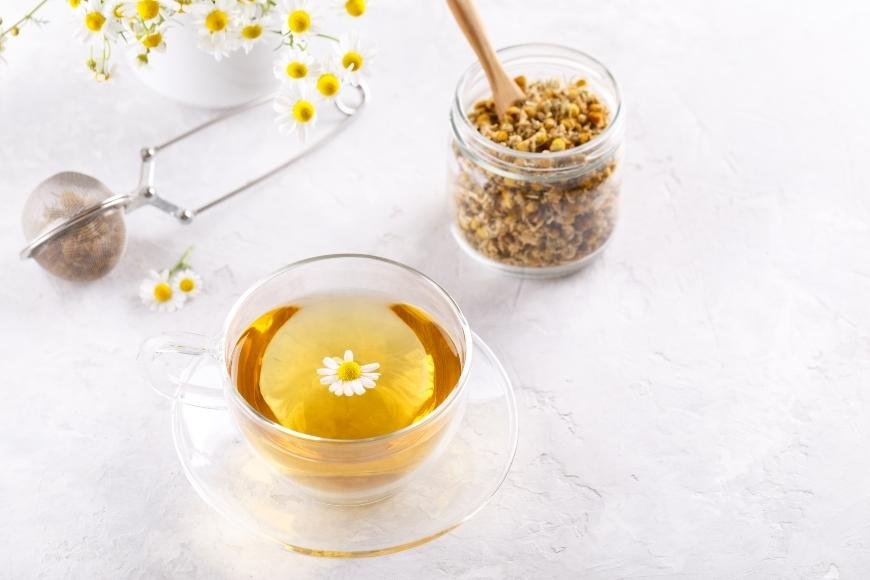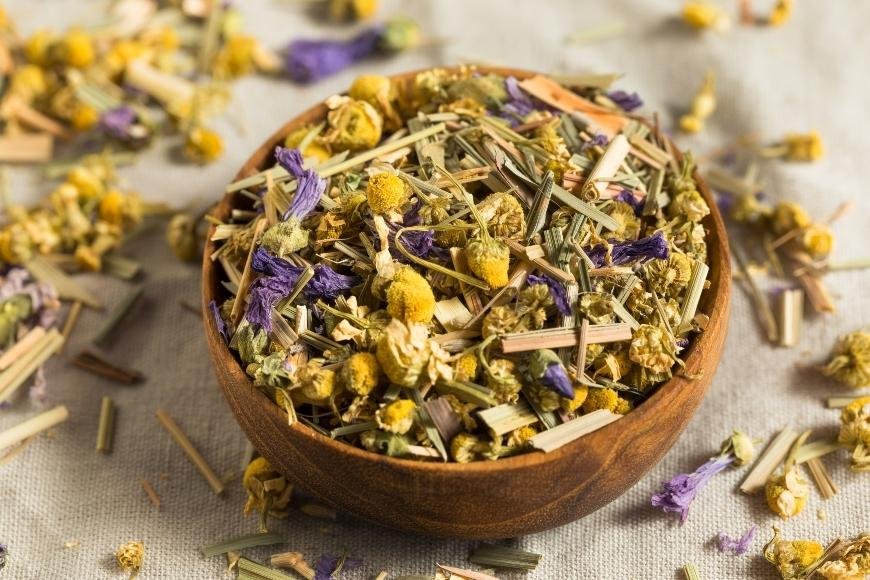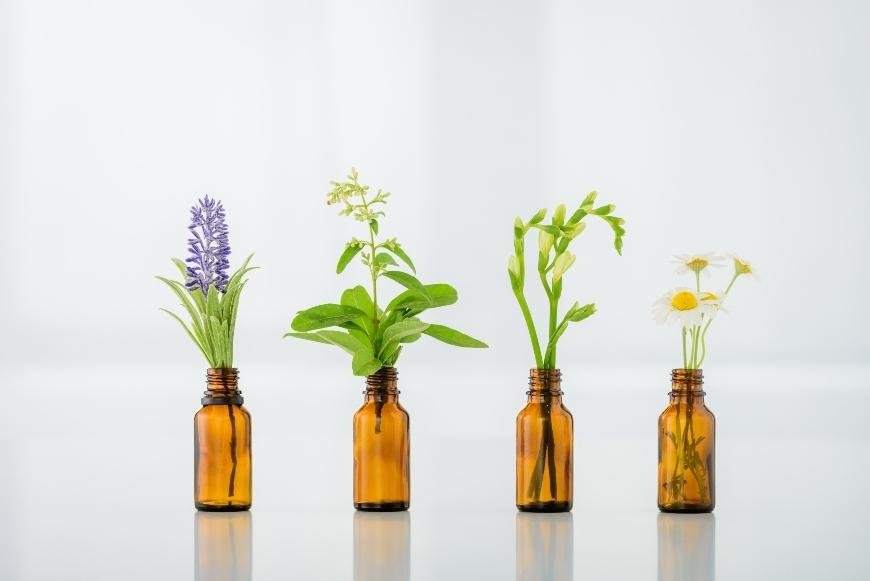How to Use Chamomile
Discover how to use chamomile for relaxation and wellness in this comprehensive guide, covering preparation, ingestion, dosage, side effects, and more.

How to use Chamomile effectively is a topic that has piqued the interest of many young adults, particularly those who recreationally grow and take drugs. This versatile herb has been utilized for centuries due to its calming effects and potential health benefits.
In this comprehensive guide on how to use Chamomile, we will delve into various aspects such as preparation methods, ingestion techniques, dosage considerations, potential side effects, combining with other substances, and long-term usage implications. By understanding these nuances, you'll be better equipped to maximize the therapeutic properties of this ancient plant while minimizing any unwanted consequences.
Table of Contents:
- Chamomile: The Ultimate Relaxation Herb
- Preparation of Chamomile
- Combining Chamomile with Other Substances
- Long-Term Use of Chamomile
- FAQs in Relation to How to Use Chamomile
- Conclusion
Chamomile: The Ultimate Relaxation Herb
Chamomile is a versatile herb that has been used for centuries to promote relaxation and soothe various ailments. It comes in two main types, Roman and German, both offering similar benefits. The bioactive constituents of chamomile, including flavonoids, terpenes, coumarins and volatile oils, bestow it with medicinal effects. Chamomile is known to reduce anxiety, aid digestion and provide anti-inflammatory effects - making it a beneficial option for those seeking alternative ways of using the herb. Young adults interested in exploring alternative ways to use chamomile beyond chamomile tea, can benefit from learning about its preparation methods and potential side effects. Regular chamomile use can provide many perks, so why not give it a try?
Preparation of Chamomile

Harvest chamomile flowers at their peak, pick them when they're fully open and vibrant. Dry the flowers by spreading them out on a clean surface in a well-ventilated area away from direct sunlight for 1-2 weeks. Store dried chamomile in an airtight container away from heat, light, and moisture to preserve potency.
How to use Chamomile?
Chamomile is a versatile herb that can be ingested in various ways, depending on your preference and desired effects.
- One popular method is brewing a soothing chamomile tea by adding 1-2 teaspoons of dried flowers to boiling water, letting it steep for 5 minutes, and then straining the liquid.
- Vaporizing chamomile using a dry herb vaporizer at 190°C (374°F) offers quick onset of effects without combustion or smoke production.
- Tinctures and extracts provide concentrated doses with longer-lasting effects and can be taken sublingually or added to food/drinks for easy ingestion.
- For culinary uses, try adding ground dried flowers to baked goods, sprinkling them onto salads, or using chamomile-infused honey as a sweetener.
Experiment with these methods to find your preferred way of ingesting chamomile and enjoy its numerous benefits, including promoting relaxation and improving sleep quality.
Dosage Considerations:
Accurately determining the dosage of chamomile is essential to ensure maximum benefits and minimal adverse reactions.
- Tea: Start with one heaping teaspoon per cup; adjust as needed.
- Vaporizing/Smoking: Begin with a small pinch (around 0.1 grams); increase cautiously if necessary.
- Mixing: Research potential interactions before combining chamomile with other herbs/supplements.
Remember, individual reactions can vary, so start low and go slow.
- For chamomile tea, steep a generous measure of dried petals in boiling water for 5-10 minutes before filtering and drinking.
- If you're smoking or vaporizing chamomile, start with a small pinch and adjust accordingly based on your experience.
- And if you're considering mixing chamomile with other herbs or supplements, be sure to research potential interactions beforehand.
Stay safe and enjoy the soothing benefits of chamomile.
Potential Side Effects:
Be mindful of any allergies you may have, particularly if your sensitivities include ragweed or daisies, before consuming chamomile. Before using chamomile on a regular basis, pregnant or nursing mothers should seek advice from a healthcare professional.
Consume chamomile in moderation to avoid potential stomach issues such as vomiting and diarrhea; start with a small dose and adjust accordingly.
- Allergic Reactions: Be cautious if you're prone to allergies related to plants in the Asteraceae family.
- Pregnancy & Breastfeeding: Consult a healthcare professional before regular use during pregnancy or while nursing.
- Gastrointestinal Issues: Overconsumption may cause vomiting and diarrhea; adjust your dosage accordingly.
To minimize potential risks, rotate between different herbs for relaxation purposes and try these alternatives:
Combining Chamomile with Other Substances
Mixing chamomile with other substances, such as alcohol or cannabis, can provide additional benefits for relaxation and sleep.
Chamomile and Alcohol: A little alcohol with chamomile tea can be a soothing nightcap, but too much can lead to dehydration, so drink moderately.
Chamomile and Cannabis: Combining chamomile with CBD-rich cannabis strains can enhance relaxation, but start with low doses and seek professional advice if needed.
- Always prioritize safety by starting slow and seeking professional advice if needed.
- Exercise caution when engaging in activities that require alertness, such as driving or operating machinery, after consuming any psychoactive substance.
Mixing chamomile with other substances can have benefits, but be cautious and prioritize safety.
Long-Term Use of Chamomile

When it comes to chamomile, one should take into account the potential long-term consequences and reduce any dangers linked with frequent utilization. To minimize risks associated with long-term use of chamomile, maintain proper dosage, avoid excessive consumption, and monitor interactions with medications.
- Stick within recommended dosages for teas and extracts based on your individual needs and tolerance levels.
- Drinking multiple cups of strong tea daily may increase the risk of side effects, so moderation is key.
- Talk with your doctor about possible interactions before incorporating chamomile into your routine if taking prescription drugs, especially blood thinners or sedatives.
Enjoy the benefits of chamomile for relaxation and overall well-being, but always remember to practice moderation and consult with a healthcare professional if you have any concerns.
FAQs in Relation to How to Use Chamomile
What is the best way to use chamomile tea?
The most effective way to use chamomile tea is by brewing dried chamomile flowers in hot water for about 5-10 minutes. Strain the mixture and enjoy it warm, preferably before bedtime or when you need relaxation. You can also add honey or lemon for taste.
How is chamomile used?
Chamomile can be used as a tea, tincture, essential oil, or topical cream. It is commonly consumed as a calming herbal tea but may also be applied topically for skin conditions like eczema and inflammation. Additionally, some people inhale its aroma through aromatherapy to reduce anxiety.
What are the disadvantages of chamomile?
Potential disadvantages of using chamomile include allergic reactions (especially if you're sensitive to plants in the daisy family), drug interactions with blood thinners and sedatives, and possible hormonal effects during pregnancy. Always consult your healthcare provider before starting any new supplement regimen.
When should chamomile be avoided?
Avoid using chamomile if you have an allergy to plants in the Asteraceae family or are taking medications that interact negatively with it (such as blood thinners). Pregnant women should exercise caution due to potential hormonal effects on uterine contractions; always consult your doctor first.
For young adults between 20 and 30 years that recreationally grow and take drugs, chamomile can be a great natural remedy to help with relaxation and anxiety. Chamomile extract can be added to tea or other beverages for a stronger effect. However, it is important to note that chamomile should not be used as a substitute for professional medical treatment.
If you're interested in trying chamomile extract, Azarius offers a variety of options to choose from. Just be sure to use it responsibly and always consult with a healthcare professional if you have any concerns.
Conclusion
Discover the benefits and risks of using chamomile with our comprehensive guide on how to use chamomile.
Learn how to prepare and ingest chamomile, including dosage considerations and potential side effects.
Find out about combining chamomile with other substances and long-term use, and always remember to consult with a healthcare professional before incorporating any new substance into your routine.
Remember, chamomile can be a great addition to your routine, but it's important to use it safely and responsibly.





































































































































